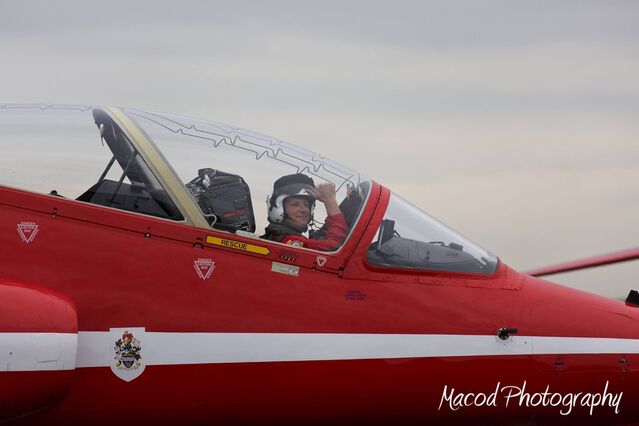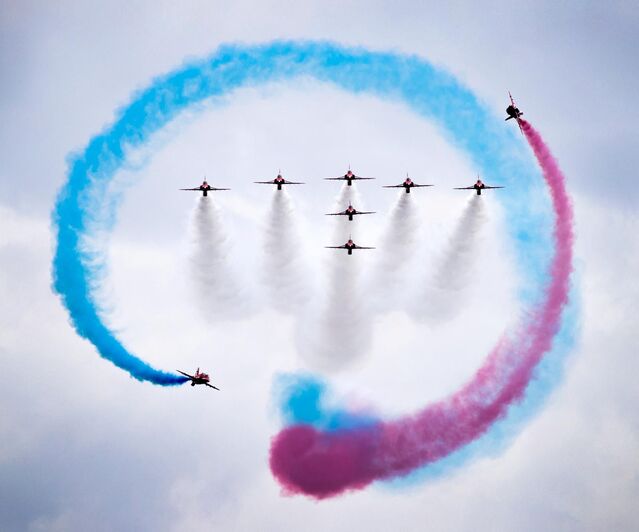Teamwork
Lessons in Teamwork from Elite Stunt Pilots
How the UK's Red Arrows develop trust wth new team members
Posted October 14, 2022 Reviewed by Hara Estroff Marano
Key points
- Robust training systems provide confidence that new team members will fit right in and can be trusted to deliver.
- A robust selection process, focusing on character as much as ability, helps to strengthen trust in new team members.
- Even with the right platform and selection, new team members need to be given room to grow into the team and their new role.
When you are flying at nine miles per minute in close proximity to eight other aircraft, performing intricate loops and maneuvers, it is important that you have absolute trust in the people around you. With tiny margins for error, you want to know that you can rely fully on your colleagues, including when new pilots join the team.
The fact that trust in each other is not called into question within the British Royal Air Force’s (RAF) world-famous elite aerobatics team, the Red Arrows, a unit that rotates its pilots on a regular basis, speaks volumes about the processes that get them to that point.
Former Red Arrows pilot and Executive Officer Dan Lowes shared the three key stages that help them develop a strong base of trust in each other, one that holds in place seamlessly as new pilots come on board.

Stage One: The Right Platform
New Red Arrows pilots are joining the world’s leading air display team, with a powerful global reputation. They have come through the RAF’s Central Flying School, often invited to train air forces all over the world.
Strong training is an essential platform for trust, in Lowes’s view. “From day one, when you turn up, the levels of safety, the levels of ability and focus in the right area at the right time, are already high.
“You need to invest in a high-quality training system and a training team that is allowed a level of autonomy in terms of the decisions they need to make. You need dedication, and that goes back to what the Red Arrows stand for, constantly seeking excellence. The organisation itself needs to recognise respect and design a highly credible training system because when you get to the high-end stuff, you already know you have a good product.”
Stage Two: Robust Selection
To be considered as a pilot for the Red Arrows, an applicant needs to have proved themselves time and again. Lowes was a fighter pilot in the RAF for 16 years and an instructor at the RAF’s "Top Gun" training school. He was only a Red Arrows pilot for his final three years.
Pilots need a minimum of 1,500 flying hours to qualify for selection, and those are not made up of long-haul trips. It takes time and experience to reach that figure. New Red Arrows pilots have the flying maturity to make quick decisions and the situational awareness to prepare for what will happen one or two hundred miles ahead.
Lowes explains, “What’s really good about waiting that time is you get a lot of experience in terms of calmness, focus of mind, understanding of a situation, and you can 'read' a developing scenario.”
Candidates still need to pass a flying test, attend a formal interview, and spend a week living and working with the team. It’s not just about how good a pilot they are but how well they can fit in. For Lowes, assessing the ability of a new pilot to fit in is a key criterion ahead of selection. “It’s a small, select team that spends a lot of time away and you’re always in each other’s pockets. You hear so often, is this person a drain or a radiator? We only need radiators in this job.”
This process means that it’s not necessarily the best pilots who find their way into the Red Arrows. Lowes explains, “We have a baseline of performance of what we require. After the candidate has tripped that baseline, we don’t have a sliding scale of someone who passed it better. It might be that the person who passed it better than anyone else is the right candidate, but they might not be the right character.
“So, they can’t claim to be the nine best pilots in the RAF, not by a long way. However, when you put their characters together, they make the nine best teammates.”

Stage Three: Growing Through Failure
Even after a rigorous selection process, the Red Arrows pilots are not the finished deal. The key to a trusted team, with even the newest members being afforded the space to grow and thrive, is understanding. “It’s now understanding that they’re going to be the future, but they’re just not going to be there yet”, Lowes says.
“So now it’s about having a tried and tested system of continuous improvement, which is encouraging people to fail and teaching them not to fear failure.”
Giving newer members of the team that space is key, according to Lowes. Recognizing that colleagues will get things wrong and push too far, but then giving them the guidance to help them work out how to do things better next time around. As a team, every Red Arrow pilot goes back to the basics with new team members.
In October, 2019, the Red Arrows displayed to two million people on the West Coast of America. After a week off on their return to the UK, they reconvened in ones and twos, joined by some new pilots, and started all over again with the basics of their craft—loops and rolls.
Lowes observes, “We don’t go airborne just to do loops and rolls, but that’s going to form the very basic requirements in order to go on and then produce a world-class show. So, even though we know it inside out, it’s about spending time going over the basics again with the new pilots.”
The Red Arrows thrive as a team, constantly trusting each other even with a regular rotation of pilots because they trust the systems and processes that bring those new members into the team and then create the space for them to grow, once they have joined.
References
Dan Lowes, The Connected Leadership Podcast 24th October 2022




